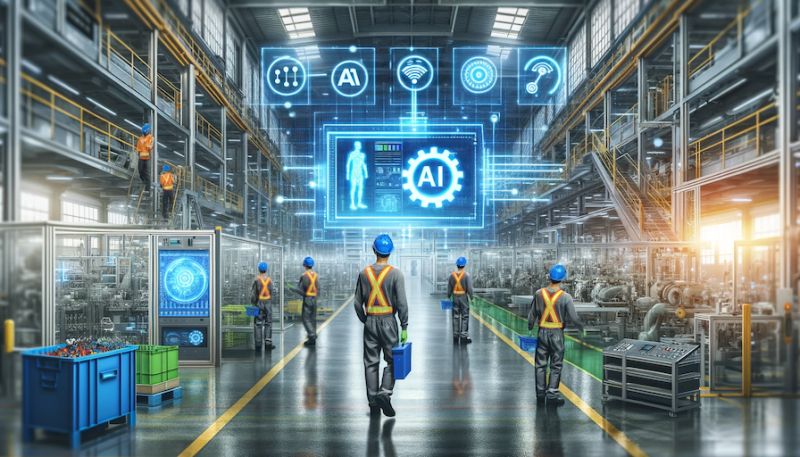Nov21

In the realm of Environmental Health and Safety (EHS), the winds of change are blowing strong and steady. As the host of the Digital Supply Chain podcast, I recently had the privilege of delving into this topic with Donovan Hornsby, Chief Strategy Officer at Benchmark Gensuite. Our conversation illuminated the profound impact that technology, particularly AI and data management systems, is having on EHS practices. This post aims to share some of these insights and explore the transformative power of technology in EHS.
Historically, EHS has been about compliance and reactive measures. However, as Donovan eloquently put it, we are now witnessing a seismic shift towards proactive risk management, powered by technological advancements. The integration of AI and computer vision into safety protocols isn't just innovative; it's revolutionary. By predicting potential hazards and preventing accidents before they occur, we are not only safeguarding lives but also fostering a more sustainable and responsible business environment.
One of the most striking takeaways from my conversation with Donovan is the role of AI in redefining risk management. AI’s ability to analyse vast amounts of data and identify potential hazards is a giant leap forward from traditional risk assessment methods. This isn't just about replacing human judgment; it's about augmenting it with machine precision to create safer workplaces. Imagine a world where every potential risk is identified and mitigated before it becomes a problem. That's the power of AI in EHS.
During the podcast, we didn't delve deeply into IoT and wearables, but these technologies are worth noting for their impact on EHS. Wearables equipped with sensors monitor environmental conditions and physiological data, providing real-time alerts to potential hazards. The growth in this sector, as reported by Verdantix, underscores their increasing importance in worker safety.
Another key aspect we discussed is the role of robust data management systems. These systems serve as the backbone of modern EHS strategies, enabling organisations to move away from siloed and inefficient processes. By centralising data and making it accessible and actionable, companies can not only comply with current regulations but also anticipate future changes and adapt accordingly. It's about building a sustainable and resilient EHS culture that extends beyond the confines of compliance. Further, a unified EHS platform can track sustainability metrics, aiding in a company's journey towards reduced carbon footprint and environmental stewardship.
The integration of technology in EHS is a journey toward a safer, more sustainable workplace. As discussed with Donovan, these advancements empower organisations to move beyond traditional compliance models, fostering a proactive safety culture.
To explore these concepts further and hear our full discussion, I invite you to listen to this episode of the Digital Supply Chain podcast.
As we navigate this path, it's clear that technology is not just an enabler but a necessary catalyst for building safer, more responsible business environments. Embracing these innovations is imperative for any organisation committed to safety and sustainability.
The future is not only about meeting standards; it's about setting new ones.
By Tom Raftery
Keywords: AI, Sustainability, Supply Chain
 Data Isn’t the Problem. Alignment Is.
Data Isn’t the Problem. Alignment Is. Friday’s Change Reflection Quote - Leadership of Change - Change Leaders Challenge Prevailing Assumptions
Friday’s Change Reflection Quote - Leadership of Change - Change Leaders Challenge Prevailing Assumptions The Corix Partners Friday Reading List - December 12, 2025
The Corix Partners Friday Reading List - December 12, 2025 Measuring the True ROI of Automated Claims Processes: Beyond Speed and Cost
Measuring the True ROI of Automated Claims Processes: Beyond Speed and Cost The New Silicon Frontier: Specialization and the Diverse Landscape of AI Chips
The New Silicon Frontier: Specialization and the Diverse Landscape of AI Chips